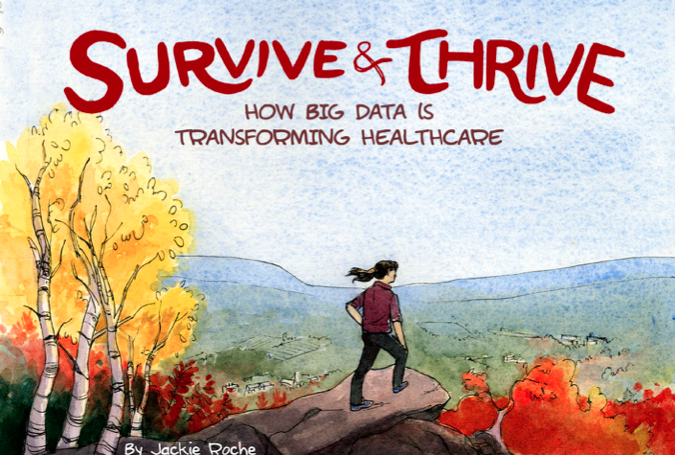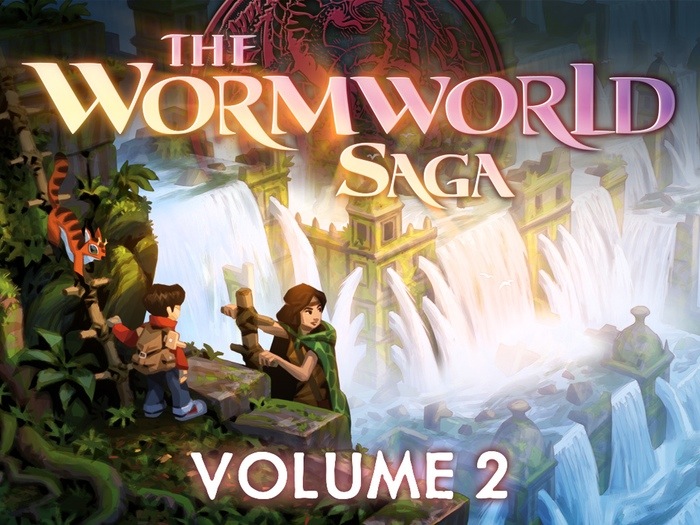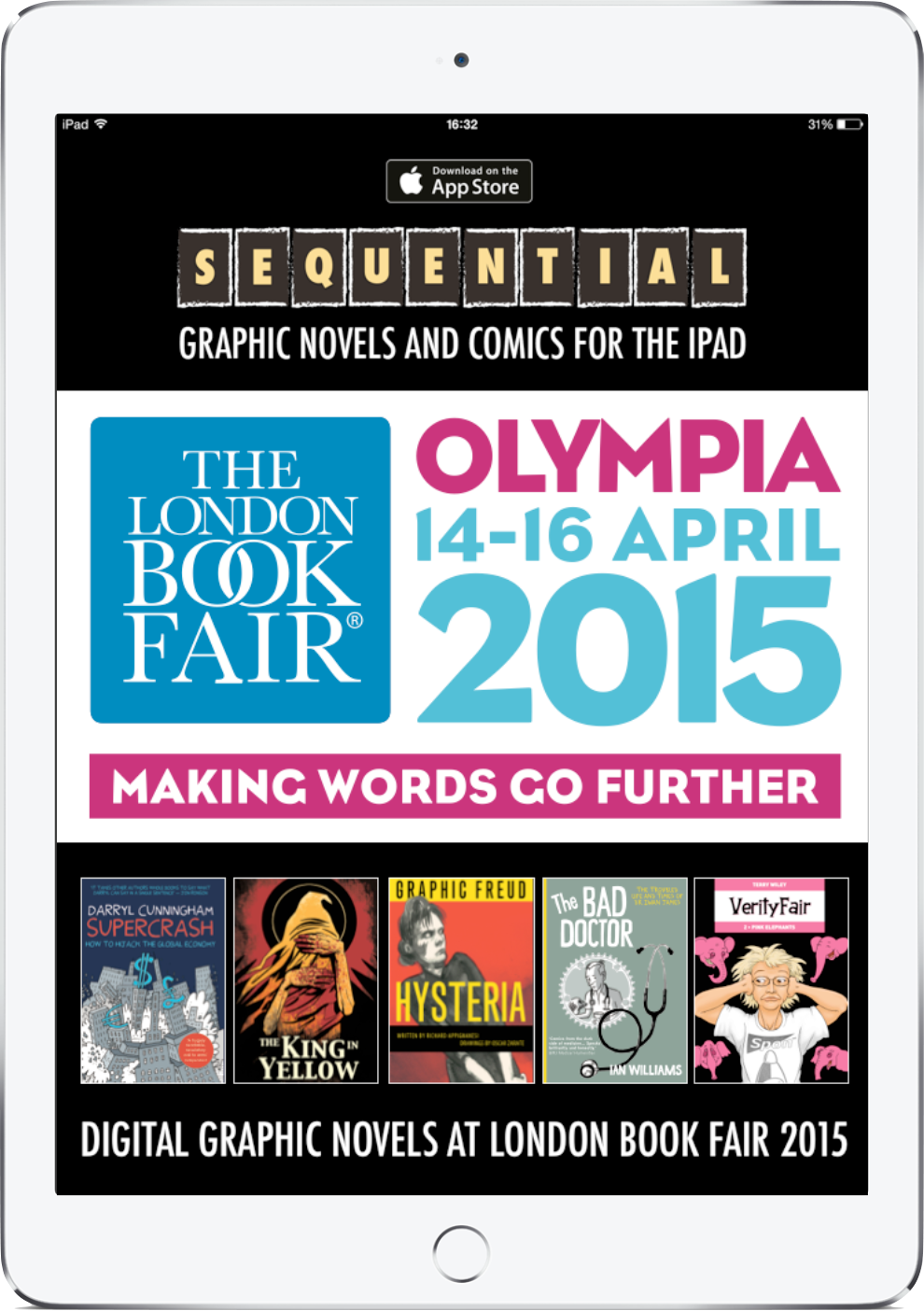
NOTE: the below is me spitballing at 3 in the morning just to get some dialog going. I invite your comments and corrections.
I’ve had this news item floating around for ages and kept meaning to write it up: Symbolia, the journalistic comics magazine for tablets, has wrapped up its final issue. Founded by Erin Polgreen and Joyce Rice two years ago, this was an ambitious attempt at putting out non fiction comics on hardhitting topics. But in two years, a lot changes on the electronic front:
A lot has changed since we launched Symbolia. It’s been an amazing two years, and we couldn’t be prouder. We’ve helped to both legitimize an industry and change the way people think about what journalism can be. We never dreamed that we would work with organizations like American Public Media, Tumblr, and the Showtime documentary series Years of Living Dangerously to create amazing visual narratives.
That said, we don’t want Symbolia to be a one-note media organization. There are other opportunities out there to tell stories using games, virtual reality, and other emerging technologies. That’s one of the reasons Joyce is pursuing game design and journalism leadership as part of her fellowship at American University.
With a little bit of sadness and a lot of excitement for new beginnings, we’re writing today to tell you that THE FUTURE, Symbolia’s latest issue, will be our last. Symbolia has published hundreds of pages of illustrated journalism in the past two years and launched the careers of some incredible artists. Our community has been amazingly supportive from day one and we’re incredibly grateful.
Among the changes: The Nib, edited by Matt Bors, and Fusion.net, edited by Jen Sorenson, emerging as well funded outlets for these kinds of comics. (With The Daily Show evolving, The Nib may just be your best daily politically based humor fix.) But these are web-site, and being multi platform seems to be far more successful than tablet-only apps.
Symbolia’s folding is another sign that, contrary to what many people, myself included, thought, tablets just aren’t that great an outlet for comics. Oh sure, we all read comics on our tablets, but as a native platform, it’s kind of fizzled. The reason? Probably the huge expense of development and maintenance.

Last summer Daniel Lieske announced that he was discontinuing the app for his lovely Wormworld comic , because it just cost too much to run. As he explained, after sinking 8000€ into developing the app (about $10,000), it just never become self sufficient:
The app turned out very nicely, even received a reward at an international digital publishing expo, and through the advertising on the Wormworld Saga website we were able to attract a steady stream of new users. However, I had to realize pretty early that my initial expectation about the amount of money the app would generate was completely unrealistic. The app made only a few hundred euros in the first three months and while there was some growth over time this trend generally continued. The app made a significant jump when it was featured on Google Play and attracted over 150 thousand new users over the course of one week. During that week, the app generated over 3000€ of revenue and I thought that this had to be the breakthrough. However, revenue plummeted directly after the feature and although the huge number of new users raised the revenue that came with each chapter release, the total amount was still below what I had hoped for when I based the project on the expected income from the app and quit my job. Over it’s total runtime of 3 years, the app earned me about 7000€.
Now, I don’t want to sound as if this is nothing. In fact it’s good money. It means that I got nearly all the money back that I originally invested, which is cool. And today I would be totally happy with an app making a few thousand euros every year. Unfortunately, the app didn’t only start to bring in money but it also started to cost more and more money.
The costs of the app – bandwidth costs, bug fixes, updates, chapter releases – are carried by Robot Media. For them, making the deal with me was a risky investment and while I was happy with a few thousand euros from the app every year, their much smaller share of the revenue put them in a tight spot. Actually I really have to be thankful that they kept the app going for as long as it went. The situation began to become a real problem when Apple released iOS7 which called for a lot of changes in the code of the app. And not only that. In order to submit an update for an iPad app now you have to provide retina quality graphic assets. All in all the new iOS would have forced Robot Media to invest several thousand euros worth of man hours to update the app. They don’t have that money and neither do I.
Lieske has instead jumped on a much easier digital funding method: Kickstarter, which funded a first print volume of Wormworld and —something I had no idea of when I started this post—just announced the launch of a second volume in the next few days.
Lieske seems to be very transparent about what quietly happened elsewhere. My own iPad is littered with comics apps that launched in the iPad heyday with special effects—you can check them out under the “Future Comics” tag here—but few of them are maintained or updated any more.
Of course there are still tons of great comics apps for tablets—Comixology, iVerse—and Thrillbent and Nobrow have their own comics portals there as well. But as I mentioned before, they don’t really create content for tablets.

One sort of exception I can think of off the top of my head would be Sequential, which releases “directors cut” graphic novels and the occasional compilation via their app. They also pursue a lot of marketing opportunities to get their stuff out there, such as a special graphic novel showcase at the upcoming London Book Fair, with an app and a pavilion:
The specially-designed pavilion will provide a home at the Fair for exciting international comics and graphic novel content and rights available for licensing and translation through a bespoke app designed by SEQUENTIAL, the digital comics and graphic novel app, that will be available to access via specially installed iPads around the pavilion as well as being available for download to the Fair’s visitors. All this will be supported by a series of seminars featuring key speakers from the world of comic and graphic novels. There will also be a graphic novel-themed bar next to the pavilion.
The decision to commission the creation of a special app to showcase graphic novels was partly to make the comics easily accessible but was also a nod to the growing market for digital comics and graphic novels which is estimated to be around $100 million dollars this year.
SEQUENTIAL will preview an enhanced digital version of Posy Simmonds’ True Love at the LBFm, and anything that gives us more Posy Simmonds is a wonderful thing.
Of course, Madefire is still around, as well, but their plan to get acquired by some bigger company as a tech company seems to have stalled, and their own original content has slowed down.
Are there some huge developments I’m missing? More than likely—please school me in the comments. But overall, people seem to love downloading and reading their comics on tablets, while resisting content created just for the medium, no matter how many bells and whistles it comes packaged with. Of course, it doesn’t help that (cough cough) a lot of the content created for tablets was meant to be a technical showcase first and a great story second. There are certainly exceptions—both Symbolia and Worldworld are definitely that—but maybe there hasn’t been a Battleship Potemkin or Avatar, let alone a Saga or Sex Criminals for tablet-based comics yet, at least not in the way that so many web-based “future comics” are.
The barriers to entry to app development are high; but even a dummy can code a webpage and get it up in a few hours. I’m excited to what emerges at Thrillbent or Comixology’s Submit, or via individual creators like Emily Carroll and Bouletcorp. (I wish I read some French so I could check out that Professeur Cyclope project I mentioned the other day.) Or Electricomics. So many frontiers to explore.Tablet-based comics have sort of fizzled because of the cost of app development. Is there a future for this platform?



How successful is Marvel’s AR program?
I’m reading a history of Minecraft, (Minecraft: The Unlikely Tale of Markus “Notch” Persson and the Game that Changed Everything) In it, the history of small, indie game design is discussed. Events like No More Sweden, where games are programmed in 28 hours, for example.
Now… here’s a bigger question… are there app developers making comics apps?
The Indie comics scene already has mastered webcomics. Is anyone doing the same in comics apps?
If so, why? Is it a limited animation thing? Why not make a simple Flash app? Or go all in and make an interactive narrative? If it’s just storytelling, can’t that all be done with what’s available now? Either use an authoring tool that one of the distributors offer, or learn ePub3 to code ebooks.